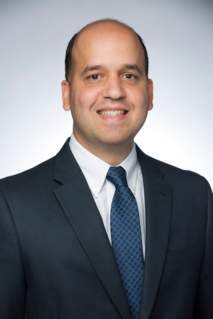Engineering professor studies Texans’ access, need for top-level trauma hospitals
Julie Cooper | December 8, 2020


Approximately 12% of Texans live at least an hour’s drive away from a hospital or trauma center equipped to deal with life-threatening injuries.
Dr. Eduardo Perez, associate professor in the Ingram School of Engineering, recently presented research to the Texas Department of State Health Services (DSHS) examining the state’s need for more top-level trauma facilities. His study was a response to the 2019-2020 Texas State Health Plan, which outlined the need to increase the availability of high-level trauma care centers (TCC).
“There are injuries that can happen on major highways and those are very high in this state. There are also injuries that can happen at homes and in industrial buildings. The problem is access,” Perez said. His report included recommendations for top-level trauma centers the state can implement to give more people suffering from traumatic injuries access to a hospital that specializes in trauma within an hour. Or, to reduce the distance people have to travel to reach a hospital or trauma center.
Perez conducted the university funded research — “Identification and Analysis of Key Dynamics Required for Sustainable Planning of the Texas Trauma System” — along with Dr. Francis A. Mendez, a professor in the Department of Computer Information Systems and Quantitative Methods, and Alakshendra Joshi, an industrial engineering graduate student. The DSHS also provided funding and support.
“There are different levels of trauma hospitals. In Texas we have four different levels. Level 1 is the hospitals that are more capable of treating any type of injury. Level 4 can take care of a patient but will have (the patient) to transfer to a Level 1,” he explained. Statewide there are 185 Level 4 trauma centers, 54 Level 3’s, 23 Level 2’s, and 18 Level 1’s.
Using data from 2014 to 2016, Perez and his team focused on 20 counties in Central Texas where there are two Level 1 trauma hospitals, no Level 2s, and 21 Level 3 and 4 hospitals. There are 60 area hospitals that are not considered TCC hospitals.
“With that information, we formulated a decision-making model that takes into account those forecasts in order to understand what the current access is if we leave the system like it is right now - and how many people would not have access to a trauma facility. The objective of this was to find the areas that are not covered. How can we improve that coverage using this model?”
According to Perez, hospitals can work to become a top-level trauma center by going through a certification process. One goal of his research was to recommend facilities to get certified, and in which parts of the state. “Most trauma facilities are located in the city centers of Austin and San Antonio. Our decision models were basically recommending certain rural locations in Texas, because those were the ones that needed the most facilities.”
He mentioned there are other factors to be considered in the decision-making process by the state – for example, access to the medical staff. “If you want to put a trauma center in a rural area, how likely can you get a doctor to move to that area?” he asked.
In the next phase of the study, Perez said they may look at technology such as video conferencing and the use of robotic surgery from a distance. “We have to get ready for that, and that’s why they do this as a five-year plan.”
The COVID-19 pandemic will also be factored into the research going forward. “We have studied the data already. We have seen that there are some similarities between certain regions in Texas. We are studying those clusters now in order to understand the regional similarities. We are looking forward to using that information to also predict the impact of the pandemic per region in Texas, so we can include that as part of the decision-making process and recommendations for future locations for trauma facilities,” Perez said.
Share this article
For more information, contact University Communications:Jayme Blaschke, 512-245-2555 Sandy Pantlik, 512-245-2922 |